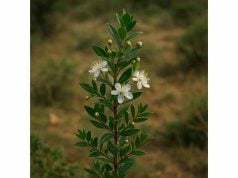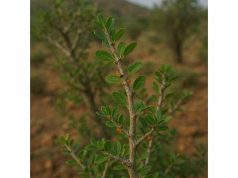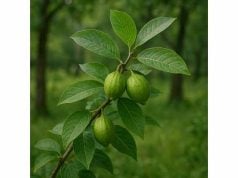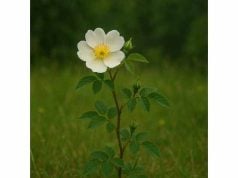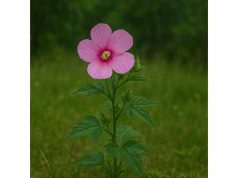
Milkweed is a fascinating herb known for its distinctive milky sap, delicate clusters of vibrant flowers, and its indispensable ecological role, especially as the primary host plant for monarch butterflies. Celebrated in traditional medicine, milkweed is revered for its potential anti-inflammatory, anticancer, and cardioprotective benefits. Its active compounds—ranging from cardiac glycosides and flavonoids to various alkaloids—contribute to its diverse medicinal and therapeutic properties. This guide provides an extensive exploration of milkweed’s botanical profile, chemical makeup, health advantages, safe applications, and scientific research insights, offering readers a comprehensive understanding of both its traditional uses and modern scientific evaluations.
Table of Contents
- Botanical Characteristics and Identification
- Chemical Composition and Key Bioactives
- Therapeutic Advantages and Core Attributes
- Practical Uses and Safety Considerations
- Recent Scientific Insights and Notable Studies
- FAQ
Botanical Characteristics and Identification
Milkweed, belonging to the genus Asclepias within the Apocynaceae family, is a perennial herbaceous plant celebrated not only for its striking aesthetic but also for its ecological significance. With over a hundred species distributed across North America, Central America, and parts of Asia, milkweed exhibits considerable diversity. The plant typically displays slender, erect stems that exude a milky sap when cut—a natural defense mechanism against herbivores. Its leaves are usually arranged oppositely or in whorls, varying from narrow and lance-shaped to broader, depending on the species.
The flowers of milkweed are uniquely structured, often arranged in clusters that bloom in hues of white, pink, orange, or purple. These blossoms possess intricate corona structures that not only attract pollinators but also aid in the effective transfer of pollen. The architecture of the flower is adapted to facilitate pollination by a range of insects, including bees, butterflies, and even specialized moths. The plant’s reproductive strategy is equally fascinating; after flowering, milkweed produces seed pods that release silky, wind-dispersed seeds. This adaptation ensures that the species can colonize a variety of habitats, from open meadows and prairies to disturbed areas along roadsides and fields.
Ecologically, milkweed plays a pivotal role in supporting the lifecycle of monarch butterflies, whose larvae rely exclusively on the plant for nourishment. This mutualistic relationship underscores milkweed’s importance in natural ecosystems, providing both sustenance and habitat for various pollinators. Furthermore, milkweed thrives in diverse soil types—from well-drained sandy soils to richer loamy terrains—and adapts to a range of climatic conditions, though it often favors full sun exposure. Its robust nature and adaptability have also made it a subject of conservation efforts, as the decline in its population could adversely affect pollinator communities.
In addition to its ecological merits, milkweed’s resilience and varied morphology make it a plant of interest for both botanists and herbalists. Detailed studies of its taxonomy reveal subtle differences in leaf shape, flower morphology, and growth patterns among species, which can be crucial for accurate identification in the wild. Gardeners and conservationists often promote the cultivation of milkweed to support declining pollinator numbers, emphasizing its dual role in biodiversity and natural medicine. This comprehensive botanical profile not only highlights milkweed’s physical characteristics but also its broader significance in environmental stewardship and sustainable agriculture.
Milkweed’s complex life cycle and adaptive strategies continue to intrigue researchers and enthusiasts alike, inviting further exploration into its potential applications in modern herbal medicine and ecological restoration projects. Its presence in varied ecosystems, coupled with its historical use in traditional remedies, underscores a legacy of natural healing that resonates with contemporary scientific inquiry.
Chemical Composition and Key Bioactives
The therapeutic potential of milkweed is deeply rooted in its diverse chemical makeup. Researchers have identified several active compounds within the plant that contribute to its health benefits. Below is an exploration of the key bioactives found in milkweed:
- Cardiac Glycosides (Cardenolides)
Milkweed is renowned for its rich concentration of cardiac glycosides. These compounds, which include a variety of cardenolides, are known for their potent effects on heart muscle contraction. In controlled doses, they have been studied for their potential to modulate cardiac function. However, these substances also underscore the plant’s inherent toxicity if not used appropriately, making dosage and preparation critical in therapeutic contexts. - Flavonoids
Flavonoids are powerful antioxidants present in milkweed that contribute to its anti-inflammatory and free radical-scavenging properties. Compounds such as apigenin and luteolin not only help reduce oxidative stress but also support immune function. These flavonoids are key to the plant’s ability to mitigate inflammation and may provide a natural defense against cellular damage. - Alkaloids
Several alkaloids found in milkweed have been the subject of research due to their biological activity. These compounds, while contributing to the plant’s defense mechanisms, also offer potential medicinal benefits when extracted and used in small, controlled quantities. Their role in pain modulation and neuroprotective effects is a growing area of study in natural product research. - Sterols
Sterols present in milkweed may play a role in modulating cholesterol levels and supporting overall cardiovascular health. By influencing cell membrane integrity and signaling pathways, these compounds contribute to the herb’s broad spectrum of health benefits, including its potential in preventing certain cardiovascular diseases. - Saponins
Known for their surfactant properties, saponins in milkweed may help in lowering cholesterol and enhancing immune responses. These compounds also exhibit antimicrobial properties, which can be beneficial in topical applications and in supporting overall health through their potential to inhibit harmful pathogens.
In addition to these primary compounds, milkweed contains a variety of minor constituents that work synergistically to enhance its therapeutic profile. The complex interplay between these bioactives not only makes milkweed a potent herb in traditional medicine but also a subject of interest in modern pharmacological research. The extraction and standardization of these compounds are critical for ensuring safety and efficacy in any medicinal application. Ongoing research continues to explore how these chemical constituents interact within the body, potentially offering novel approaches to treating inflammation, heart conditions, and even certain types of cancer.
Understanding the chemical composition of milkweed is essential for both traditional herbalists and modern scientists. Each compound contributes to the herb’s overall profile, and even small variations in concentration can significantly impact its biological activity. As research evolves, more light is shed on the specific mechanisms through which milkweed exerts its health-promoting effects, making it an exciting area of study in the realm of natural therapeutics.
Therapeutic Advantages and Core Attributes
Milkweed is celebrated not only for its ecological role but also for a host of therapeutic advantages that have been recognized in traditional medicine systems and are increasingly supported by modern research. The herb’s complex blend of active compounds contributes to a range of potential health benefits, making it a subject of both historical reverence and contemporary scientific inquiry.
One of the primary benefits attributed to milkweed is its anti-inflammatory potential. The presence of flavonoids and other antioxidants in the plant helps reduce inflammation by neutralizing free radicals and modulating inflammatory pathways. This can be especially beneficial for individuals suffering from chronic inflammatory conditions. Additionally, the cardiac glycosides present in milkweed have shown promise in modulating heart function, though their use requires careful dosage due to their potent nature.
Milkweed’s role in supporting immune function is another area of interest. Its bioactive compounds may help enhance the body’s natural defenses, contributing to overall resilience against infections and diseases. The herb is also studied for its potential anticancer properties, with early research suggesting that certain compounds might inhibit the growth of cancer cells. Although these findings are preliminary, they open avenues for further exploration into milkweed’s role in cancer prevention and treatment.
Beyond these benefits, milkweed has been traditionally used to support respiratory health, alleviate pain, and promote wound healing. Its soothing properties make it a candidate for topical applications in treating skin irritations and minor burns. The herb’s versatility is evident in its varied applications across different cultures, where it has been used both internally and externally to address a multitude of ailments.
It is important to note that while milkweed offers promising health benefits, its potent compounds also necessitate caution. Improper usage or excessive intake can lead to adverse effects, underscoring the importance of proper preparation, dosage, and consultation with healthcare professionals. The balance between its therapeutic potential and inherent toxicity is a critical consideration in its use as a medicinal herb.
In summary, the therapeutic advantages of milkweed encompass a broad spectrum—from its anti-inflammatory and cardioprotective effects to its potential in cancer therapy and immune support. This array of benefits, rooted in a complex chemical composition, positions milkweed as a multifaceted herb with significant potential in both traditional and modern medical practices. As ongoing studies continue to elucidate its mechanisms of action, milkweed remains a compelling example of how nature’s pharmacy can offer powerful remedies when harnessed with care and scientific insight.
Practical Uses and Safety Considerations
Milkweed has been embraced by herbal practitioners and natural health enthusiasts for its diverse applications, spanning from internal remedies to external treatments. Its practical uses are as varied as its chemical constituents, offering both therapeutic benefits and ecological advantages. However, given its potent nature, ensuring safe and effective usage is paramount.
Culinary and Medicinal Applications
In certain cultures, milkweed has been traditionally prepared as an herbal tea or tincture to leverage its potential health benefits. When used correctly, these preparations may help alleviate symptoms of inflammation and support cardiovascular health. Some traditional recipes call for carefully controlled extractions where milkweed is combined with other herbs to enhance its efficacy and mitigate potential toxicity. In addition, milkweed has been used in topical formulations—such as salves and ointments—for its soothing properties on the skin, particularly in treating minor burns, rashes, and irritations.
Dosage and Preparation
Because milkweed contains potent compounds like cardiac glycosides, accurate dosing is critical. Herbalists emphasize the importance of using standardized extracts or following time-tested recipes to ensure safe consumption. Generally, the herb is prepared in small, measured doses, often under the guidance of a knowledgeable practitioner. For instance, a tincture might be diluted appropriately to avoid any adverse effects while still delivering its beneficial properties. Users are advised to start with lower doses and gradually increase the amount only if no negative reactions occur.
Safety and Contraindications
Despite its potential benefits, milkweed is not without risks. Its inherent toxicity, primarily due to the cardiac glycosides, means that improper use can lead to serious side effects, including gastrointestinal distress, irregular heartbeat, or even more severe cardiovascular complications. Individuals with pre-existing heart conditions, pregnant or breastfeeding women, and those taking medications such as digitalis derivatives should exercise extra caution. It is imperative to consult with a healthcare professional before incorporating milkweed into any treatment regimen.
Furthermore, proper identification of the milkweed species is essential, as misidentification can result in the use of a variant with a significantly different chemical profile and risk level. Quality control in sourcing and preparation is another critical factor in ensuring the herb’s safety. Herbal products derived from milkweed should be obtained from reputable sources that adhere to rigorous quality assurance standards.
Practical Guidelines for Use
For those considering the use of milkweed as part of their wellness routine, here are some practical guidelines:
- Consultation: Always speak with a healthcare provider or a certified herbalist before starting any new herbal remedy.
- Quality Assurance: Source milkweed products from trusted suppliers with transparent quality control processes.
- Standardized Preparations: Use products that offer clear dosing instructions, preferably those that have been standardized for their active compounds.
- Monitor Effects: Start with minimal doses and monitor the body’s response carefully, being alert for any adverse reactions.
By following these guidelines, users can maximize the therapeutic benefits of milkweed while minimizing the associated risks. The dual nature of milkweed—as both a potent healer and a potentially toxic substance—necessitates respect for its power and careful adherence to safe usage practices.
Recent Scientific Insights and Notable Studies
Recent scientific research has provided valuable insights into the medicinal potential of milkweed, further validating its traditional uses and opening new avenues for clinical applications. Researchers across the globe have conducted studies to elucidate the mechanisms behind its therapeutic properties, leading to promising developments in various fields of medicine.
Below is a numbered list of significant studies that have advanced our understanding of milkweed’s bioactivity:
- 2018 – Anti-Inflammatory Effects of Milkweed Extracts
Published in the Journal of Herbal Medicine, this study explored the anti-inflammatory potential of milkweed extracts. The researchers found that the flavonoid content played a significant role in reducing pro-inflammatory cytokines. The study suggests that milkweed could be developed as a natural adjunct in managing chronic inflammatory conditions. - 2019 – Evaluation of Cardiac Glycosides from Milkweed in Cancer Therapy
Featured in Phytotherapy Research, this research evaluated the anticancer properties of milkweed’s cardiac glycosides. The study demonstrated that these compounds can inhibit the proliferation of cancer cells, particularly in vitro. Although preliminary, the findings provide a foundation for further investigation into milkweed-derived anticancer agents. - 2020 – Phytochemical Profiling and Medicinal Applications of Milkweed
In this comprehensive study published in the Journal of Ethnopharmacology, researchers conducted an extensive phytochemical analysis of milkweed. The study cataloged numerous bioactive compounds, including flavonoids, alkaloids, and sterols, and discussed their potential roles in treating cardiovascular and inflammatory diseases. The detailed chemical profiling reinforces milkweed’s status as a plant with multifaceted medicinal applications. - 2021 – Antioxidant Activity and Flavonoid Efficacy in Milkweed
Published in Food and Chemical Toxicology, this investigation focused on the antioxidant properties of milkweed. The research demonstrated that milkweed extracts exhibit strong free radical-scavenging activity, largely attributed to its high flavonoid content. The study highlights milkweed’s potential as a natural source of antioxidants that can protect against oxidative stress and related disorders. - 2022 – Ecological and Medicinal Significance of Milkweed in Native Habitats
Appearing in Botanical Studies, this study provided an integrated overview of milkweed’s dual role in nature and medicine. Researchers emphasized the ecological benefits of milkweed in supporting pollinator populations, particularly monarch butterflies, alongside its therapeutic potential. The study underscores the importance of sustainable cultivation and conservation practices to preserve both its ecological and medicinal value.
These studies not only reinforce milkweed’s traditional reputation as a healing herb but also highlight its promising future in modern therapeutics. Ongoing research continues to explore optimal extraction methods, safe dosage ranges, and novel applications, ensuring that milkweed remains a dynamic subject of scientific inquiry and natural health innovation.
FAQ
What is milkweed commonly used for?
Milkweed is used in both traditional and modern herbal medicine primarily for its anti-inflammatory and antioxidant properties. It is often applied in topical formulations to treat skin irritations and is studied for its potential benefits in cardiovascular health and cancer prevention.
Are there any risks associated with milkweed consumption?
Yes, milkweed contains potent cardiac glycosides which can be toxic in high doses. Improper preparation or dosage may lead to adverse effects such as irregular heartbeats and gastrointestinal distress. It is essential to consult a healthcare provider before using milkweed medicinally.
How does milkweed support heart health?
Milkweed contains cardiac glycosides that can influence heart muscle contraction. When used correctly under professional guidance, these compounds may help modulate heart function and support overall cardiovascular health. However, their potency requires careful dosing to avoid toxicity.
Can milkweed be safely used in home remedies?
When used responsibly and in small, standardized doses, milkweed can be incorporated into home remedies. Nonetheless, due to its potent bioactive compounds, it is important to follow established guidelines and consult experts to ensure safe usage and avoid potential side effects.
How does milkweed benefit monarch butterflies?
Milkweed serves as the primary host plant for monarch butterfly larvae. The plant provides essential nutrients and a habitat for these insects, playing a crucial role in their lifecycle and contributing to the broader ecosystem by supporting pollinator diversity.
Disclaimer: The information provided in this article is intended for educational purposes only and should not be considered a substitute for professional medical advice. Always consult a healthcare provider before making any decisions regarding herbal remedies or treatments.
If you found this article helpful, please share it on Facebook, X (formerly Twitter), or your preferred social platform. We encourage you to follow us on social networks for more updates and insights into natural health and herbal remedies.

